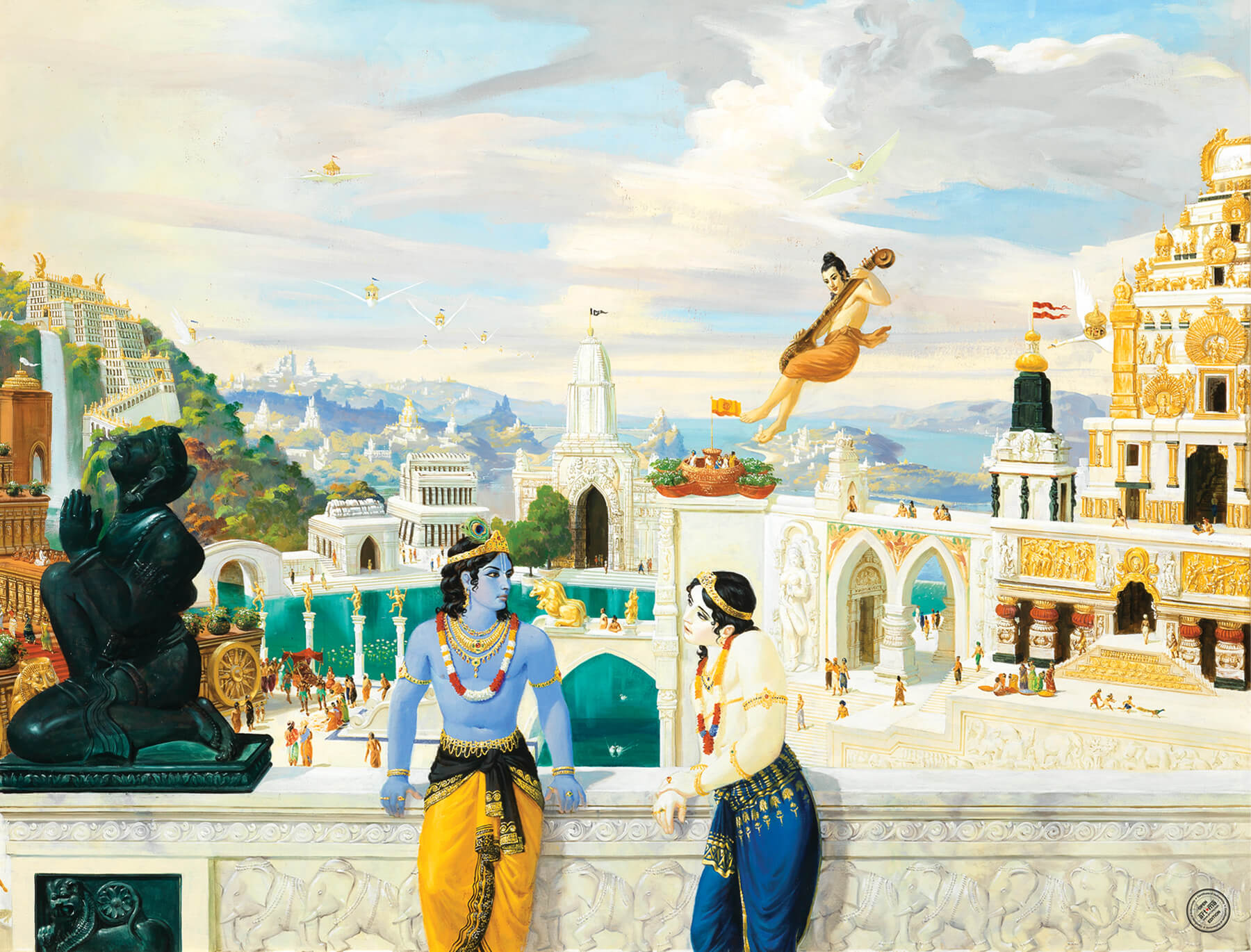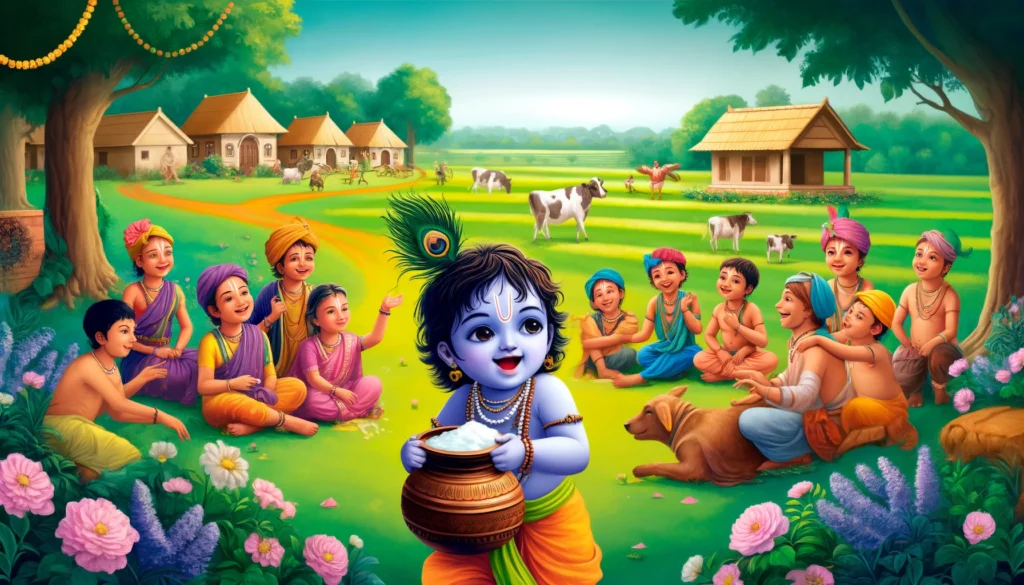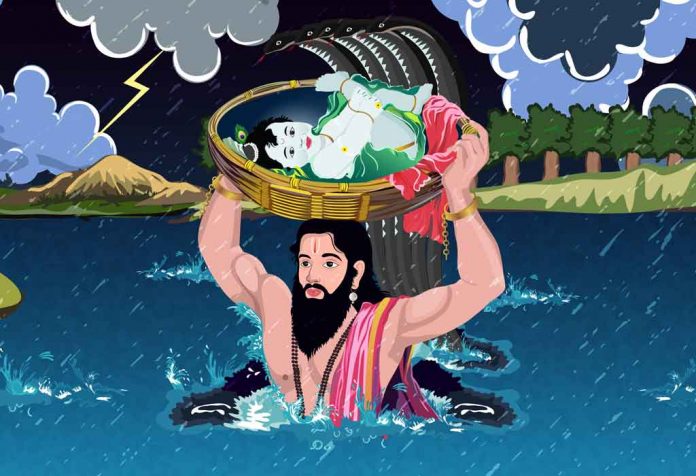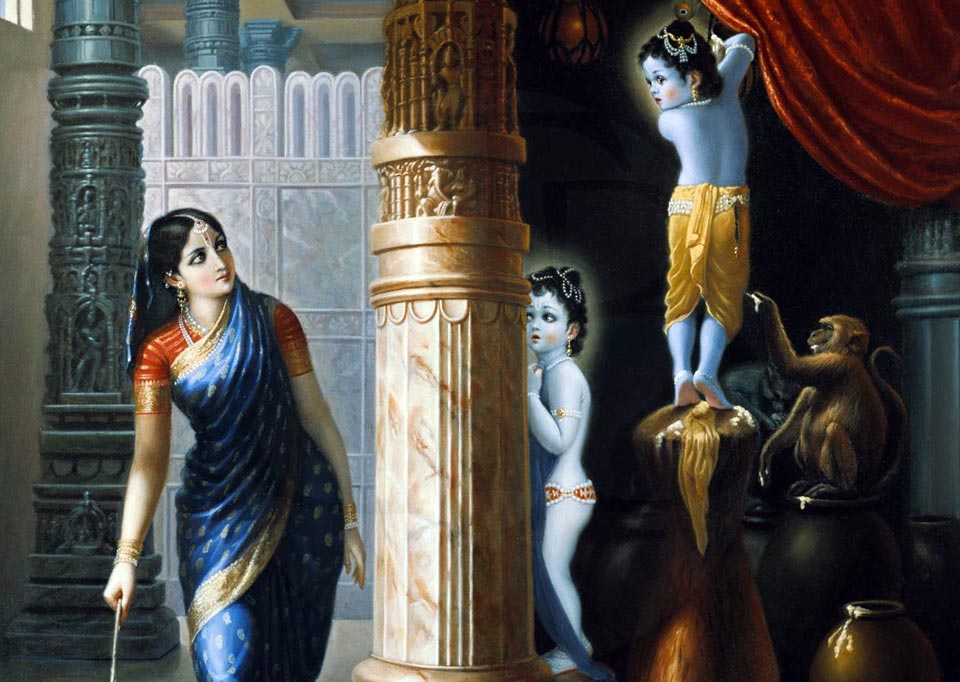Krishna leela stories
Krishna Leela Stories
Celebrating Krishna Janmashtami 2023: A Guide to the Festivities
Krishna Janmashtami, the festival celebrating the birth of Lord Krishna, is one of the most significant Hindu festivals. In 2023, this joyous occasion falls on September 6th. This article will delve into the cultural, spiritual, and social aspects of the festival, along with tips for celebrating it in a meaningful way.
What is Krishna Janmashtami?
Krishna Janmashtami marks the birth of Lord Krishna, the eighth avatar of Vishnu, who is revered for his wisdom, playfulness, and divine love. The festival is observed on the eighth day of the dark fortnight (Krishna Paksha) in the month of Bhadrapada according to the Hindu lunar calendar.
Significance of Krishna Janmashtami
Spiritual Relevance: Lord Krishna is considered a divine figure who imparts the teachings of the Bhagavad Gita. Celebrating his birth is a reminder of righteousness, love, and the importance of dharma (duty).
Cultural Celebrations: The festival is celebrated with grandeur across India and among Hindu communities worldwide. Temples are adorned, and devotees engage in singing bhajans (devotional songs), performing dances, and enacting scenes from Krishna’s life.
How to Celebrate Krishna Janmashtami in 2023
- Preparation for the Festivities
Decorate Your Home: Use flowers, lights, and traditional decorations to create a festive atmosphere. Many people draw “rangoli” designs at the entrance of their homes.
Set Up a Krishna Idol: Create a beautiful altar for the idol or picture of Lord Krishna, often adorned with fresh flowers, fruits, and sweets.
- Fasting and Rituals
Fasting: Many devotees observe a fast until midnight, the time of Krishna’s birth. The fast can be broken with delicious offerings like “makhan” (butter) and “peda” (a sweet).
Midnight Puja: At midnight, conduct a puja (prayer ritual). Light a lamp, chant prayers, and offer food items to the deity.
- Community Celebrations
Visit Temples: Join local festivities at temples where special prayers, cultural programs, and drama depicting Krishna’s life take place.
Participate in Dahi Handi: In many parts of India, especially Maharashtra, people form human pyramids to break earthen pots filled with curd, symbolizing Krishna’s playful nature.
- Enjoy Traditional Delicacies
Food plays a significant role in Janmashtami celebrations. Prepare and share traditional dishes like:
Makhan Mishri: A combination of butter and sugar, symbolizing Krishna’s love for butter.
Paneer Dishes: Dishes made with cottage cheese, which is also a favorite of Krishna.
Sweets: Various Indian sweets like laddoos and barfis are prepared and distributed among family and friends.
Beautiful Stories of Lord Krishna for Kids
Lord Krishna, one of the most beloved deities in Hindu mythology, is known for his charm, wisdom, and playful nature. His stories are not only entertaining but also impart valuable lessons for children. In this article, we’ll explore some beautiful stories of Lord Krishna that are perfect for kids. These tales are rich in moral values and can inspire young minds.
- The Birth of Krishna
Summary
Lord Krishna was born in a prison cell to Devaki and Vasudeva. His arrival brought joy amidst darkness, as he was destined to defeat the evil king Kansa. The story illustrates the triumph of good over evil and the importance of hope.
Moral
Goodness will always prevail over wickedness.
- Krishna and the Butter Thief
Summary
Little Krishna loved butter more than anything. He would often steal it from his mother, Yashoda. One day, he was caught, but instead of being angry, Yashoda found his antics amusing. This story highlights Krishna’s playful nature and the bond between mother and child.
Moral
It’s okay to have fun and be playful, as long as it’s in good spirit.
- Krishna and the Gopis
Summary
The gopis (cowherd girls) were enchanted by Krishna’s flute music. They would leave their chores and dance joyfully when they heard him play. This story emphasizes the beauty of friendship, devotion, and the joy of living in the moment.
Moral
True happiness comes from love and togetherness.
- Krishna Lifts Govardhan Hill
Summary
When Indra, the rain god, became angry with the villagers of Vrindavan, he unleashed torrential rains. To protect the villagers and cattle, Krishna lifted the Govardhan Hill, providing shelter for seven days. This tale showcases Krishna’s divine power and his role as a protector.
Moral
One should stand up for others and protect them in times of trouble.
- The Kaliya Naag Story
Summary
Kaliya, a multi-headed serpent, terrorized the Yamuna River, poisoning its waters. Krishna confronted him, danced on his heads, and eventually subdued him. This story teaches children about courage and the importance of facing challenges head-on.
Moral
Courage can overcome even the most fearsome obstacles.
- The Ras Leela
Summary
During the full moon night, Krishna performed the Ras Leela, a dance with the gopis. Each gopi felt that Krishna was dancing only with her, showcasing his ability to love everyone equally. This story teaches about love and devotion in a unique way.
Moral
Love is boundless and can be shared with everyone.
- Krishna and Sudama
Summary
Sudama, a poor Brahmin and a childhood friend of Krishna, visited him in Dwarka, seeking help. Krishna welcomed him with open arms and treated him royally. He even ensured Sudama returned home with riches. This story emphasizes the value of true friendship.
Moral
Krishna Leela Stories
True friendship transcends wealth and status.
choices. Seeking counsel can lead to better decision- timber. 3. The Consequences of conduct The The Tale of the Mahabharata An Epic of Duty, Honor, and Humanity The Mahabharata is one of the longest and most intricate epics in mortal history, weaving together themes of duty( dharma), righteousness, and the complications of mortal nature. This ancient Indian epic not only narrates the story of the Kurukshetra War but also offers dateless wisdom that resonates across societies and generations. In this composition, we’ll explore the main themes, characters, and assignments of the Mahabharata, making it accessible to a ultramodern followership. Overview of the Mahabharata Written by the savant Vyasa, the Mahabharata consists of around 100,000 shlokas( verses) and is divided into 18 parvas( books). It tells the story of the Kauravas and the Pandavas, two royal families fighting for the throne of Hastinapura. The conflict eventually leads to the disastrous battle of Kurukshetra, a struggle that embodies the moral dilemmas faced by its characters. Main Characters 1. Pandavas Yudhishthira The eldest family, known for his adherence to verity and righteousness. Bhima The strong and fierce legionnaire, representing fidelity and courage. Arjuna A master sportswoman, whose internal conflicts reflect the complications of dharma. Nakula and Sahadeva The halves known for their chops in warfare and horsemanship. 2. Kauravas Duryodhana The eldest Kaurava, characterized by ambition and covetousness. Shakuni Duryodhana’s uncle, known for his cunning and manipulative tactics. 3. Krishna Krishna plays a vital part as a friend and companion to the Pandavas, serving as Arjuna’s charioteer and conducting the training of the Bhagavad Gita during the war. crucial Themes 1. Dharma( Righteous Duty) The central theme of the Mahabharata revolves around dharma. Characters constantly grapple with the moral complications of their conduct. Yudhishthira’s commitment to verity, indeed when it leads to dire consequences, exemplifies the struggle between particular solicitations and societal duties. 2. The Nature of War The epic does n’t glorify war rather, it depicts its woeful consequences. The Kurukshetra War leads to immense suffering, showcasing the ruinous impact of mortal conflict. 3. Family and treason Family ties are a double- whetted brand in the Mahabharata. While fidelity to family is a recreating theme, treason and dishonesty within the Kaurava and Pandava clans lead to conflict and tragedy. 4. The Power of remission remission emerges as a vital theme, particularly in the connections between characters like Draupadi and the Kauravas. It highlights the mortal capacity for empathy and the possibility of redemption. Assignments from the Mahabharata 1. The Complexity of mortal Nature The characters in the Mahabharata are n’t one- dimensional; they embody colorful merits and excrescencies, reflecting the complexity of mortal feelings. This teaches us to appreciate the tones of argentine in moral dilemmas. 2. significance of Wisdom and Guidance Krishna’s part as a tutor underscores the value of wisdom and guidance in making delicate Mahabharata serves as a exemplary tale about the consequences of one’s conduct. Characters face the impacts of their opinions, buttressing the idea that our choices shape our fortune. 4. Unity in Diversity Despite the conflict, the grand emphasizes the significance of concinnity and understanding among different perspectives, prompting compendiums to embrace differences.
Divine Stories of Shri Krishna Leela: Celebrating the Enchanting Tales
Shri Krishna, one of the most revered deities in Hinduism, is known for his playful and divine pastimes, collectively referred to as Krishna Leela. These enchanting stories not only capture the essence of his character but also convey profound spiritual messages and life lessons. In this article, we will explore some of the most beloved Krishna Leela stories that illustrate his divine nature and the values he embodies.

Krishna Leela Stories
What is Krishna Leela?
Krishna Leela encompasses a wide range of narratives about the life and adventures of Lord Krishna, from his childhood in Vrindavan to his role in the Mahabharata. Each tale highlights different aspects of his personality—his mischievousness, his wisdom, and his unwavering love for his devotees.
Iconic Stories of Krishna Leela
- The Butter Thief
Summary: As a child, Krishna was notorious for his love of butter. He would often steal butter from the pots of village women, earning him the nickname “Makhan Chor” (butter thief). One day, while trying to reach a pot, he fell and smeared himself with butter, leading to his mother Yashoda catching him in the act.
Moral: This story teaches us about innocence and the joy of childhood. It reminds us to cherish the playful spirit within us.
- The Raas Leela
Summary: One of the most celebrated tales, the Raas Leela depicts Krishna dancing with the gopis (cowherd girls) under the full moon. Each gopi felt as though Krishna was dancing only with her, symbolizing his ability to love each devotee uniquely.
Moral: The Raas Leela highlights the theme of devotion and love, emphasizing that true love is selfless and can be shared with everyone.
- Krishna and Kaliya Naag
Summary: Kaliya, a multi-headed serpent, polluted the Yamuna River, causing havoc in Vrindavan. Krishna confronted Kaliya, danced on his heads, and ultimately subdued him, restoring peace to the river.
Moral: This story teaches about bravery and the importance of standing up against evil. It reminds us that courage can overcome even the most daunting challenges.
- The Govardhan Hill
Summary: When Lord Indra unleashed a storm upon the villagers of Vrindavan out of anger, Krishna lifted the Govardhan Hill to protect his devotees. This act demonstrated his divine power and care for his followers.
Moral: The story emphasizes the significance of protecting those we love and standing against unjust forces.
- Krishna and Sudama
Summary: Sudama, a poor Brahmin and childhood friend of Krishna, visited him seeking help. Despite his poverty, Krishna welcomed him warmly and offered him riches in return, showcasing the depth of their friendship.
Moral: This tale highlights the essence of true friendship, which transcends wealth and status, reminding us of the value of loyalty and compassion.
Lessons from Krishna Leela
The stories of Krishna Leela are rich with teachings that can inspire us in our daily lives:
Embrace Joy: Krishna’s playful nature encourages us to find joy in the little things and maintain a light-hearted spirit.
Practice Forgiveness: Many stories involve forgiveness, showing us that letting go of grudges fosters peace and harmony.
Value of Devotion: The unwavering love of the gopis for Krishna exemplifies pure devotion, inspiring us to cultivate sincerity in our own relationships.
Stand for Righteousness: Krishna’s battles against evil serve as a reminder to stand for what is right, no matter the odds.
The Life of Shri Krishna on Earth: A Divine Journey
Shri Krishna, one of the most beloved figures in Hindu mythology, embodies the essence of love, wisdom, and divine playfulness. His life on Earth is marked by miraculous events, profound teachings, and captivating stories that have inspired countless devotees throughout history. In this article, we will explore the key phases of Shri Krishna’s life, highlighting his divine attributes and the lessons they impart.
Krishna Leela Stories
Early Life of Shri Krishna
Birth and Childhood
Shri Krishna was born to Devaki and Vasudeva in a prison cell in Mathura, destined to end the tyranny of his evil uncle, King Kansa. His birth was heralded by divine signs, and upon his arrival, he manifested as the eighth avatar of Lord Vishnu. To protect him from Kansa, Vasudeva smuggled him across the Yamuna River to the village of Gokul, where he was raised by his foster parents, Nanda and Yashoda.
Mischievous Childhood
Krishna’s childhood was filled with playful exploits and miracles. He was famously known as “Makhan Chor,” stealing butter from the homes of the village women. His playful nature endeared him to the villagers, and his antics brought joy to their lives. Stories of his encounters with demons, like Putana and Kaliya, showcase his bravery and divine power, establishing him as a protector of his devotees.
The Adolescent Years
The Raas Leela
As he grew older, Krishna captivated the hearts of the gopis (cowherd girls) with his enchanting flute music. The Raas Leela, a divine dance with the gopis, symbolizes the spiritual union between the divine and the soul. This dance not only highlights Krishna’s playful nature but also represents the theme of love and devotion, teaching that true love is selfless and pure.
The Guru and the Mahabharata
Krishna’s wisdom and strategic mind came to the forefront during his time as a mentor to the Pandavas. He played a crucial role in the epic Mahabharata, guiding Arjuna on the battlefield with the teachings of the Bhagavad Gita. His teachings on duty (dharma), righteousness, and the nature of reality continue to resonate with people across the globe.
The Great War of Kurukshetra
The climax of Krishna’s earthly life culminated in the great battle of Kurukshetra. He served as Arjuna’s charioteer and imparted profound wisdom during their conversations. The Bhagavad Gita, a dialogue between Krishna and Arjuna, addresses the moral dilemmas faced in life, emphasizing the importance of duty, selflessness, and devotion to God.

Later Life and Departure
The Return to Dwarka
After the war, Krishna established the city of Dwarka and ruled as a just and compassionate king. His life in Dwarka was marked by diplomacy and the resolution of conflicts. He continued to spread the teachings of love and righteousness among his followers.

The Departure from Earth
Shri Krishna’s earthly journey concluded when he returned to his divine abode. His departure, often viewed as a return to his eternal state, serves as a reminder of the transient nature of life. The events leading to his departure—such as the curse of a sage and the subsequent end of his dynasty—illustrate the cycle of life and the inevitability of fate.
Krishna Leela Stories
Lessons from the Life of Shri Krishna
The life of Shri Krishna offers numerous lessons that are relevant even today:
Embrace Love and Compassion: Krishna’s interactions emphasize the importance of love, both divine and human.
Stand for Righteousness: His role in the Mahabharata teaches us to uphold dharma and fight against injustice.
Seek Knowledge: The teachings of the Bhagavad Gita encourage the pursuit of wisdom and self-realization.
Celebrate Life: Krishna’s playful nature reminds us to find joy in everyday life and maintain a sense of wonder.
The Life of Shri Krishna on Earth: The Birth of Lord Krishna
The birth of Lord Krishna is a pivotal event in Hindu mythology, celebrated with great fervor across the globe. Known as Janmashtami, this festival commemorates the arrival of Krishna, the eighth avatar of Lord Vishnu, who incarnated to restore dharma (righteousness) and defeat evil. In this article, we will explore the circumstances surrounding Krishna’s miraculous birth, his early life, and the significance of his arrival on Earth.
The Circumstances of Krishna’s Birth
The Prophecy
Krishna’s birth was foretold by a prophecy that declared that Devaki, the wife of King Vasudeva of Mathura, would bear a son who would end the tyranny of her brother, King Kansa. Fearing the prophecy, Kansa imprisoned Devaki and Vasudeva, vowing to kill any child born to them.
The Divine Intervention
Despite Kansa’s efforts, divine forces ensured that Krishna’s birth would unfold as destined. On the night of his birth, the atmosphere was filled with auspicious signs: the earth trembled, the stars shone brightly, and a divine light illuminated the prison. At midnight, Devaki gave birth to a beautiful child—Shri Krishna.
The Escape to Gokul
To protect Krishna from Kansa, Vasudeva received a divine message instructing him to take the newborn to Gokul. In an incredible act of faith, he managed to escape from the prison, crossing the turbulent Yamuna River. Upon reaching Gokul, he placed Krishna in the care of Nanda and Yashoda, his foster parents, and returned to the prison with the newborn daughter of Yashoda, who was actually the goddess Durga in disguise.
Kansa’s Fury
When Kansa learned that another child had been born, he rushed to the prison to kill Devaki’s newborn. However, when he attempted to strike the baby girl, she transformed into the goddess Durga and warned him that his destroyer was already alive and well. This marked the beginning of Krishna’s journey as a divine hero destined to vanquish evil.
Krishna Leela Stories
Early Life of Lord Krishna
Childhood in Gokul
Krishna grew up in Gokul, surrounded by love and joy. His childhood was marked by numerous playful antics, such as stealing butter, playing with his friends, and performing miraculous feats. Stories of his escapades, like defeating the serpent Kaliya and lifting the Govardhan Hill, established him as a protector and a divine being.

Relationship with the Gopis
Krishna’s interactions with the gopis (cowherd girls) are famous for their depth and beauty. His enchanting flute music drew the gopis to him, symbolizing the soul’s yearning for the divine. The Raas Leela, a dance performed by Krishna with the gopis, illustrates the spiritual connection between the divine and the devotees.

The Significance of Krishna’s Birth
Restoration of Dharma
Krishna’s birth signifies the restoration of dharma in the world. His life is a testament to the belief that good ultimately triumphs over evil. He came to guide humanity, providing teachings that resonate even today.
A Symbol of Love and Devotion
Krishna’s playful nature and deep love for his devotees remind us of the importance of love, compassion, and devotion in our lives. His stories inspire us to cultivate a loving relationship with the divine and with each other.
Childhood Stories of Shri Krishna: Tales of Mischief and Miracles
Shri Krishna, a central figure in Hindu mythology, is celebrated not only for his divine qualities but also for his enchanting childhood stories. These tales, filled with mischief, bravery, and miraculous feats, provide valuable lessons and entertain audiences of all ages. In this article, we will explore some of the most beloved childhood stories of Shri Krishna that capture his playful spirit and profound teachings.
The Birth of Krishna: A Prelude to Childhood
Krishna was born in Mathura to Devaki and Vasudeva, but to protect him from the evil King Kansa, he was raised in the village of Gokul by Nanda and Yashoda. His arrival was marked by miraculous signs, and from a young age, he displayed extraordinary abilities, foreshadowing the divine role he would later play.

- The Butter Thief
Summary
One of the most endearing tales of Krishna’s childhood is his escapades as the “Makhan Chor” (butter thief). He loved butter and often devised clever plans to steal it from the pots in the homes of the village women. In one instance, he formed a human pyramid with his friends to reach a high pot of butter.

Moral
This story highlights the innocence of childhood and the joy of mischief, reminding us to embrace playfulness in our lives.
Krishna Leela Stories
- Krishna and Kaliya Naag
Summary
When Krishna was a young boy, the Yamuna River was terrorized by Kaliya, a multi-headed serpent. The river had become poisonous, and the villagers were in despair. Krishna confronted Kaliya and, after an intense struggle, danced on his heads, subduing him. This act restored peace to the river and the village.

Moral
This story teaches the importance of courage in the face of adversity and the idea that good can triumph over evil.
Krishna Leela Stories
- The Lifting of Govardhan Hill
Summary
To protect the villagers from the wrath of Indra, who was angry over their worship of the Govardhan Hill instead of him, Krishna lifted the hill with his little finger. He provided shelter for the villagers and cattle from torrential rains, showcasing his divine power.
Moral
The tale emphasizes the significance of protecting loved ones and standing up against unjust forces.
- Krishna and the Gopis
Summary
Krishna’s playful nature shone through in his interactions with the gopis (cowherd girls). He would often tease and charm them with his flute music. One famous episode involves Krishna stealing the clothes of the bathing gopis, teaching them a lesson about humility and modesty.
Moral
This story illustrates the themes of love, devotion, and the playful nature of divine relationships, encouraging us to cultivate humility.
- Krishna and the Putana Demoness
Summary
Putana, a demoness sent by Kansa, disguised herself as a beautiful woman to kill infants. She tried to poison Krishna while breastfeeding him. However, Krishna, even as a baby, sucked the life out of her, defeating her. This story marks one of Krishna’s first confrontations with evil.
Moral
The tale signifies that evil can take many forms, but the innocent and pure can overcome even the darkest threats.